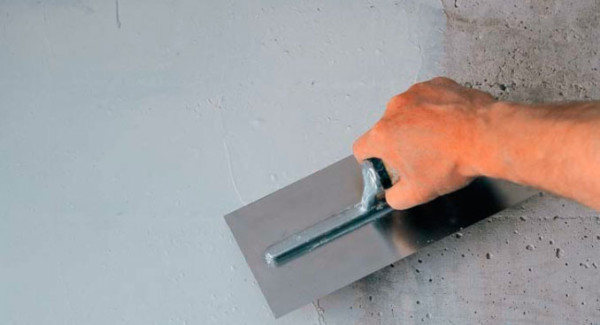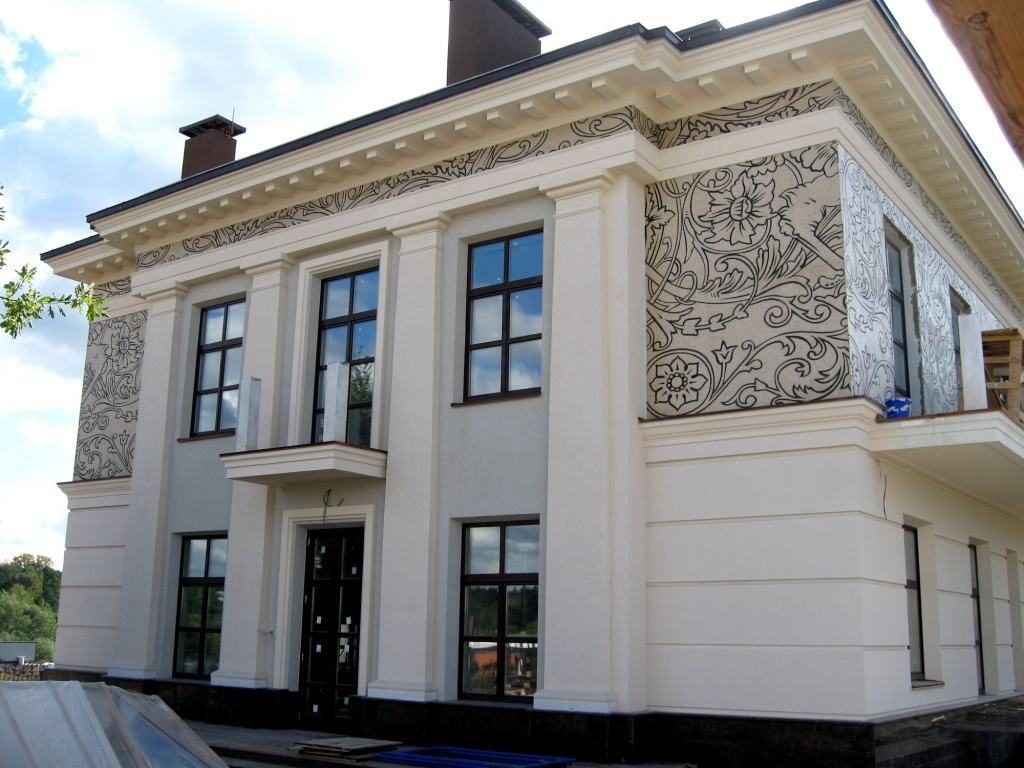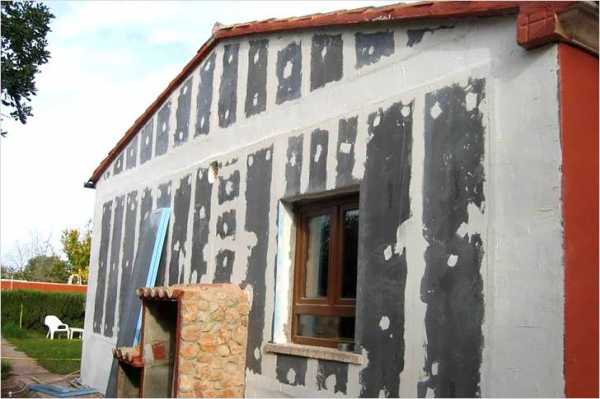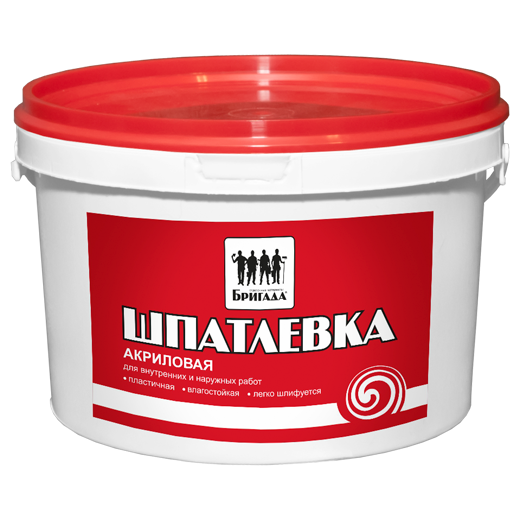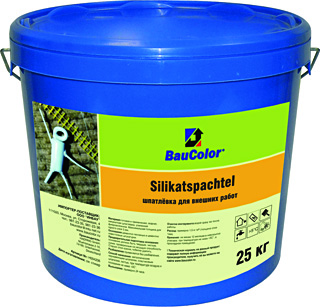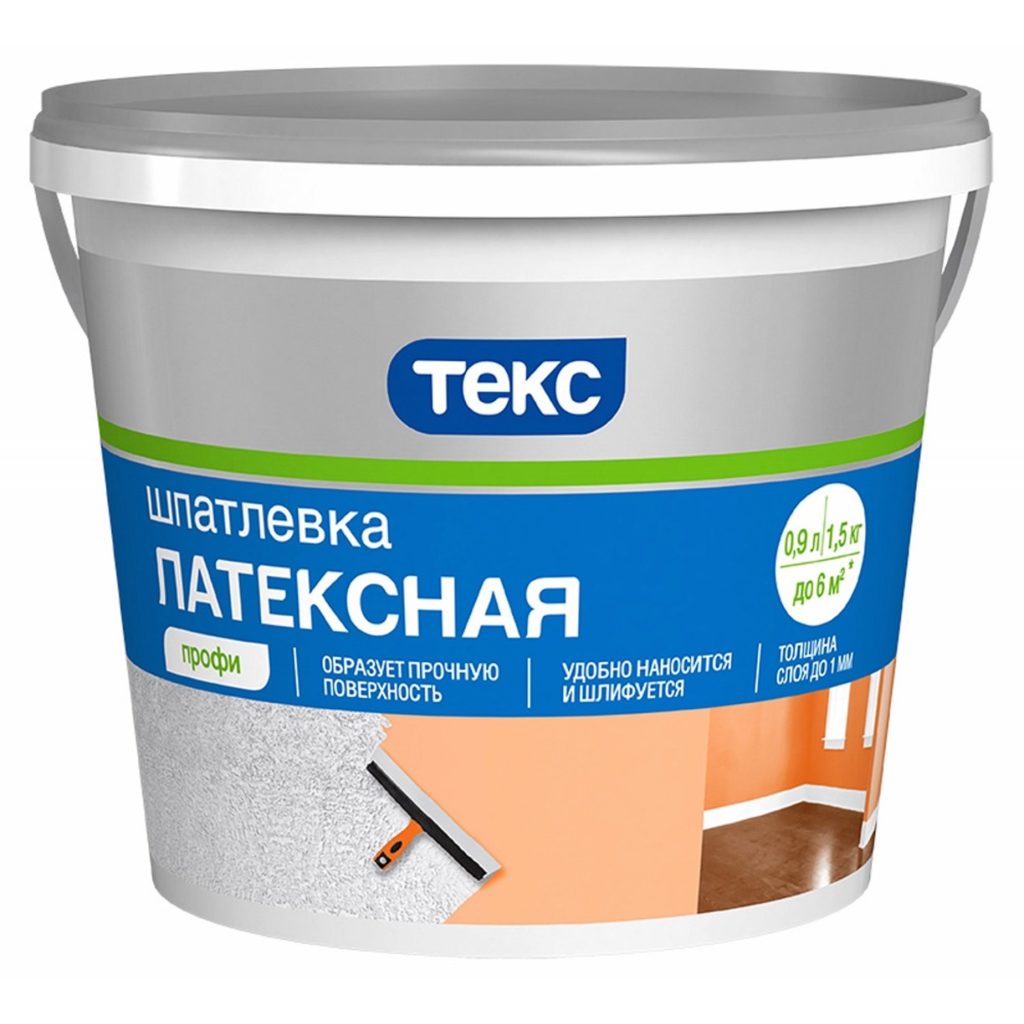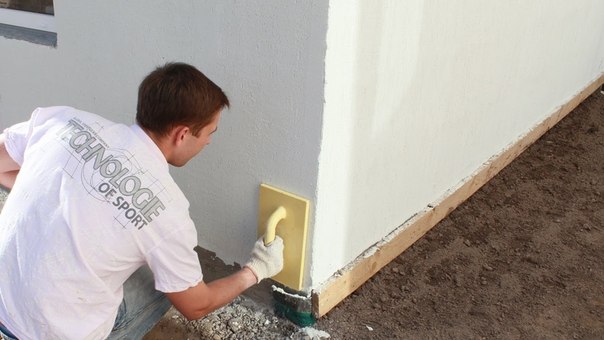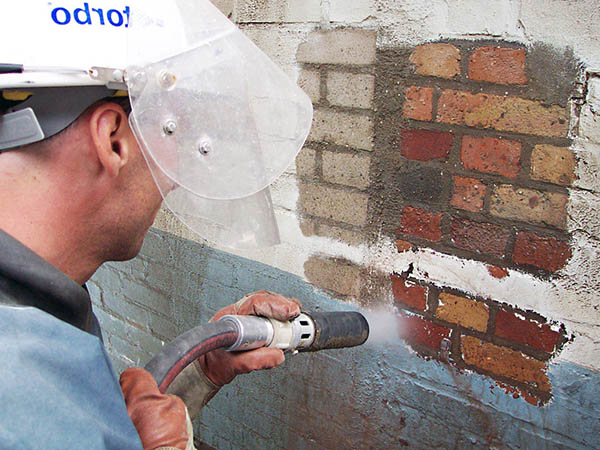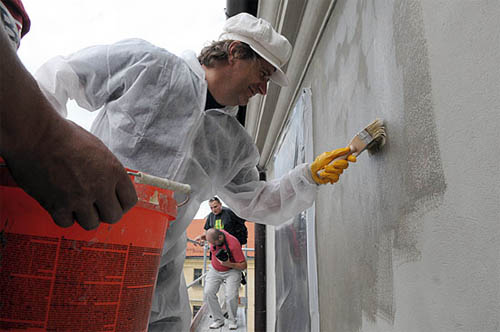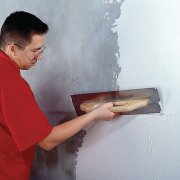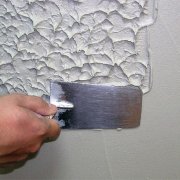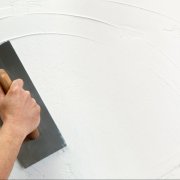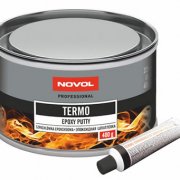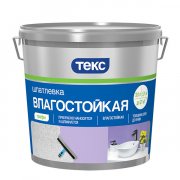Concrete putty for outdoor use
The facade of the building often has to be updated to improve the appearance. Before finishing, professionals are advised to process the surface with putty. The tool will prepare the building foundation for the application of the finish coating and will protect the material from aggressive environmental influences. The main thing is to choose and use the composition correctly. To do this, you should familiarize yourself with the types of putty on concrete and the application technique.
The content of the article
Material Purpose
Putty on concrete for outdoor use has the following purpose:
• masking of defects in the base;
• protection against temperature extremes, ultraviolet and moisture;
• increase of sound and heat insulation indoors;
• surface preparation for decoration.
Requirements
Requirements for puttying on concrete:
• Elasticity. The composition should be easy to apply and spread over the surface. This is important for DIY enthusiasts.
• Resistance to changes in temperature and moisture resistance. Since the product is used for outdoor applications, the material must be resistant to temperature changes.
• Steam tightness. A tool that has this property will protect the material from an aggressive biological environment (fungus and mold).
Features
Putty is used at an air temperature not lower than +50 C and air humidity not higher than 80%. In addition, direct sunlight should not fall on the surface. After applying the product, it is recommended to cover the surface with a film. This will protect the material from rain while the composition dries.
Types of putty
According to the sequence of application, start, finish and universal putty are distinguished. The first tool is applied to the wall to seal defects. The finishing composition is used to level the surface and prepare for decoration. Universal material used as a starting and finishing tool.
According to their readiness for use, the product is classified into dry mixes and finished products. Dry formulations are diluted with water before use and kneaded with a construction mixer. Finished products do not need these manipulations. Such materials are used immediately after opening the package.
In addition, the putty on concrete is classified by composition.
Acrylic
This is a tool with a plastic structure. The material is easy to apply and does not peel off after solidification. The product is sold ready-made. This putty is intended only for topcoat. Layer thickness - 1-3 mm. The material smoothes the surface, but does not close up the defects. The composition has increased strength, elasticity, water resistance and frost resistance.
Cement
The product is available in the form of a dry mixture. Varieties of material - starting, finishing and universal.
A cement-based product even closes deep cracks. Lack of product - shrinks. This means that after drying, the surface may deform and crack. Advantage is an acceptable cost.
Silicate
A silicate product is a mineral product that is intended for filling the facade.The main active ingredient is liquid glass. The material is available in finished form. The tool is recommended for use with aerated concrete. Putty will protect the surface from changes in temperature, moisture and dust. The disadvantage is that after solidification defects may appear on the material.
Latex
Putty is released in a pasty form. The product is intended for topcoat before finishing. The material is easy to apply and has improved characteristics, but does not close deep cracks. The disadvantage is the high price.
Silicone
Such a composition is easy to apply and has increased strength. The product has the ability to cleanse itself. The disadvantage is the high price.
Selection rules
When choosing putties for the facade, you should pay attention to what work the material is intended for. Only suitable for external use. It is important that the date of manufacture of the product is close to the start date of the repair.
Before buying, you should also evaluate the surface condition. If there are no large cracks on the building foundation, then only the finishing composition can be used. In the presence of numerous defects on the surface, starting material will be required.
The choice of putty in terms of readiness depends on the repair budget and the skills of the finisher. Fans are recommended to use finished products, since such compositions do not require preparation and are easy to apply. If the budget is minimal, then it is better to choose dry mixes, but only if the finisher has construction skills.
Cost
The price of putty depends on the type and manufacturer. The cost of dry mixes is lower than the cost of finished formulations. The average price of a dry product is 350 rubles per bag, weighing 25 kg. A putty for concrete by a popular manufacturer in finished form costs 1,400 rubles per bucket, with a volume of 28 liters.
Material consumption
Putty consumption per 1 m2 for concrete depends on the type of product. Exact numbers are indicated on the product packaging. As a rule, the consumption is 0.7-1.5 kg per 1 m2 with a layer thickness of 1 mm.
Application Technique
Preparatory work
Surface preparation consists in dismantling the old coating and all fasteners. After this, clean the construction base from oil and grease stains. If after removing the old coating it turned out that there is mold or fungus on the surface, then you need to get rid of them. This can be done with antiseptic agents. Next, inspect the wall for moving parts. To do this, take a hammer and tap on each surface area. If voids have formed during this process, then fill them with a repair compound. After that, brush the surface or treat it with a construction vacuum cleaner to clean the base from dust.
Primer use
The primer is applied immediately after cleaning the surface. The primer improves the adhesion of the putty and the building base. For concrete, professionals are advised to use a deep penetration primer. Such a tool will fill all the pores of the surface. Primer the wall with a roller, brush or spray gun (as in the photo below). Then suspend the work so that the composition freezes. Drying times are indicated on the packaging.
Putty application
Putty instructions:
• Prepare the solution if using a dry mixture. Put the product in a container, fill it with water in the proportions indicated on the package, and stir the composition with a construction mister to the consistency of thick sour cream.
• Fill the composition with defects. Next, spread the product over the surface.
• Take a break to dry the composition. Hardening time depends on the type of product.For example, an acrylic product dries in four hours, and a cement product in three days. Hardening time, look at the packaging.
• Sand and prime. Further work can be continued when the primer hardens.
• Apply finishing putty to the wall. For the facade, professionals are advised to put the product in two layers. After each application, take a break so that the composition freezes.
• Peel and prime the surface. Then proceed to finish.
The video in this article demonstrates how to use putty for the facade of a building.
Knowing the criteria for choosing putty for concrete and the rules for using the material, you can independently repair the facade without resorting to professionals.
Tags: concrete
